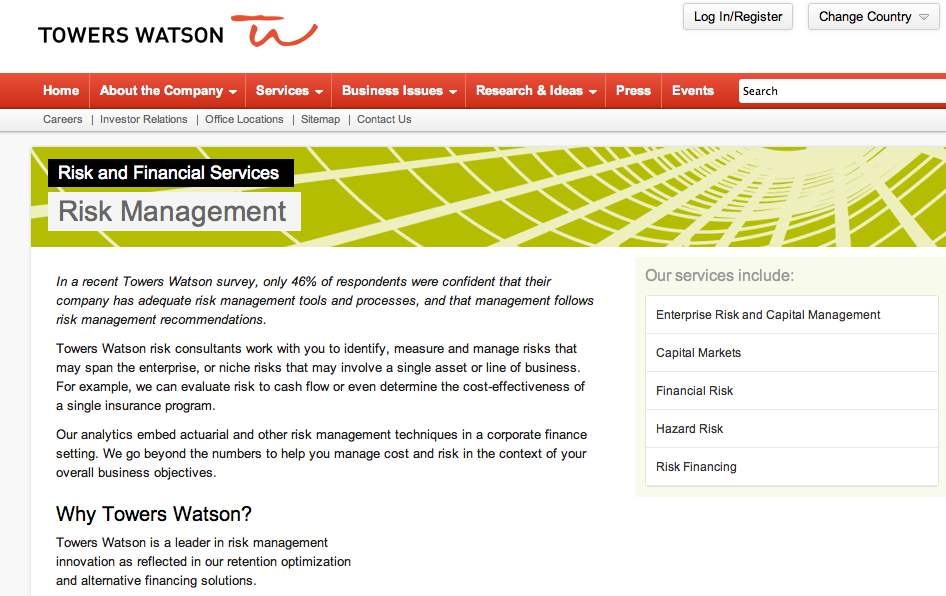
On current trends it will be around 2040 before UK private-sector defined benefit (DB) pension schemes can fully de-risk unless they consider alternative strategies, according to global professional services company Towers Watson.
Alasdair MacDonald, head of investment strategy at Towers Watson, said: "Our research suggests that it will be nearly 30 years before there are enough index-linked gilts (ILGs) to fully satisfy UK pension fund demand. Currently, the average UK pension fund is targeting a very low-risk investment strategy on a 20-year time horizon, which means that many of them will not meet this objective."
Towers Watson's research is based on the projected availability of low-risk assets - with the supply of index-linked gilts considered the most important constraint in the UK – rather than pension funds' projected ability to buy them, factoring in equity return assumptions and contributions.
Alasdair MacDonald said: "While the current pricing of index-linked gilts is slowing down the pace of de-risking, rapid innovation is starting to deal with this mismatch between supply and demand, notably alternative LDI, risk transfer and do-it-yourself buy-in."
Towers Watson points to a number of property and infrastructure assets that deliver low-risk, index-linked cash flows that can be used to plug the gap between ILG supply and demand, which it considers a possible alternative to conventional liability driven investment. In addition, the company suggests Enhanced Transfer Values and Pension Increase Exchanges can be helpful as they transfer some risk to members who, unlike pension funds, may not be compelled to buy ILGs. Furthermore, given the supply of annuities is even more constrained than ILGs, Towers Watson predicts many more schemes will be forced to "do-it-themselves" and operate like an annuity provider. It says these providers are not typically 100% invested in ILGs and offset additional risk by the shareholder providing capital support to the fund – much like a pension fund sponsor.
Alasdair MacDonald said: "UK pension funds of all sizes and liability structure need to be aware that there are a range of de-risking alternatives to suit most governance capabilities. Also if all UK pension schemes were to adopt these strategies, we estimate that ILG supply and demand would balance around ten years earlier than expected – bridging the gap between schemes' aspirations and the market reality. While choosing an alternative de-risking option and when to implement it can be complex and time consuming, it may significantly shorten the de-risking journey with all the benefits that accompany that."

